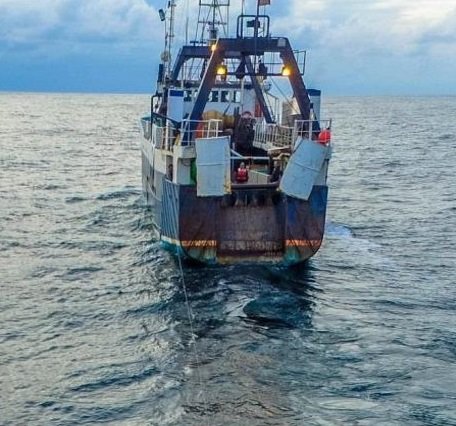Warming Ocean Poses New Challenges For Salmon Researchers
- April 17, 2020
- John Harrison

Ongoing research in the near-shore ocean off the coasts of Washington and Oregon offers tantalizing clues about why adult salmon and steelhead returns to the Columbia have been below average in recent years, a NOAA Fisheries scientist reported to the Council at its April meeting.
The research suggests that the first year juvenile salmon and steelhead spend in the ocean is critical to their growth and survival. During that first year, juvenile salmon and steelhead are about the same size as the multitudes of forage fish that form an important part of the ocean food chain for larger fish. Thus, they may be eaten by predators and, if the food supply in the ocean is diminished, as it has been in recent years, the problems for juvenile salmon and steelhead are compounded. They can starve.
Predation on juvenile salmon and steelhead in the ocean is not well understood.
“We still have a major data gap; we don’t sample predators in the ocean, and so we don’t have a good idea of who’s eating [juvenile salmon and steelhead] or how many,” said Brian Burke, a fisheries research biologist with the NOAA Fisheries Northwest Science Center in Seattle. Common Murres are plentiful over the near-shore ocean, and while it is known they eat juvenile salmon and steelhead, “we just don’t know how many they are eating,” he said. Dogfish are another example. It’s certain they are a predator, but the extent is not known.
Additionally, the ocean is warming, not only in the North Pacific but around the world, and a warming ocean is not good for cold-water species like salmon and steelhead. That is confounding ocean researchers who simply can’t rely on past measurements and trends to predict the future.
“The ocean has been warming since the mid 1990s, and unfortunately, I don’t see it getting better any time soon,” Burke said. “Ocean warming, lack of food, and an explosion of a phytoplankton species that produces a marine biotoxin all contributed to the decline of multiple species in the ocean, including both marine mammals and fish. We’ve seen emaciated salmon. We’ve never seen that before. Unfortunately, we need to be prepared for this to be more common in the future. With a change in climate, we are moving outside [historically] observed conditions. It’s not an optimistic situation, but the more we know the more we can do. We are being challenged in ways we simply don’t have the experience and background to understand well, but we are doing our best.”
To demonstrate the current problems in the ocean, Burke presented the latest version of NOAA’s Ocean Ecosystem Indicator chart. The chart includes 16 biological and physical indicators and rates each as good, fair, or poor. In 2019, 15 of the indicators were fair or poor. The only indicator ranked good was for Copepod Biomass, rated good. Copepods are marine organisms at the base of the food chain. Copepods from the ocean off Alaska tend to be larger and have more fat than those from the ocean off southern California. Thus, when waters off Washington and Oregon are cool and northern copepods dominate, the food supply for juvenile salmon and steelhead is better than it is when the water is warmer and southern copepods dominate. Burke described it as rather like the difference between cheeseburgers and celery. In 2019, cheeseburgers dominated, and that may bode well for future survival.
If there is one place fishery managers have limited control it’s the ocean, particularly as climate change warms the water. But that doesn’t mean nothing can be done to improve salmon and steelhead survival in the ocean.
“It’s really important to think about salmon in the context of the ecosystem,” Burke said. “We can’t assume this [the warming ocean] means [salmon and steelhead] will go extinct, but it demonstrates the importance of the juvenile life stage and the impacts of climate change. Ocean heat will go on for a long time so we need to ramp up our understanding of how freshwater work impacts marine survival.
He said that while fishery managers can’t manage the ocean, they can manage things like fish size, the timing of juvenile fish migration to the ocean, and predators in both freshwater and the ocean. Because wild fish tend to be smaller than hatchery fish when they migrate to the ocean, one management option for fishery managers is to focus on ways to increase wild fish growth rates in freshwater, Burke said. As larger fish, they may be better able to avoid predators.



